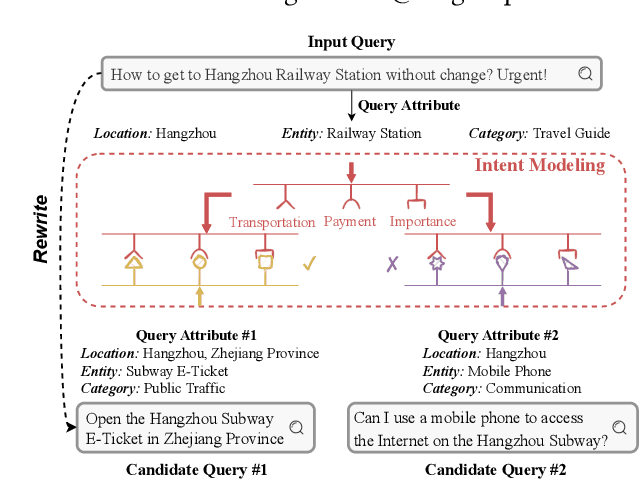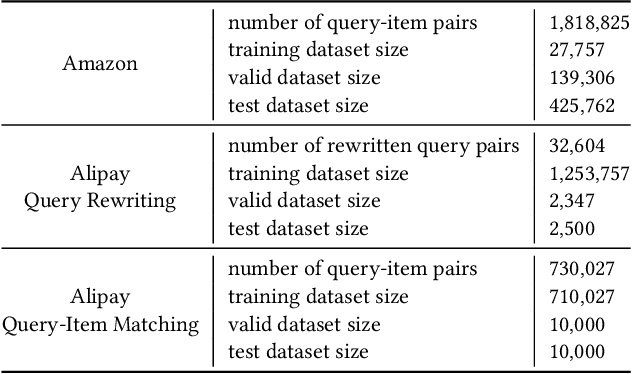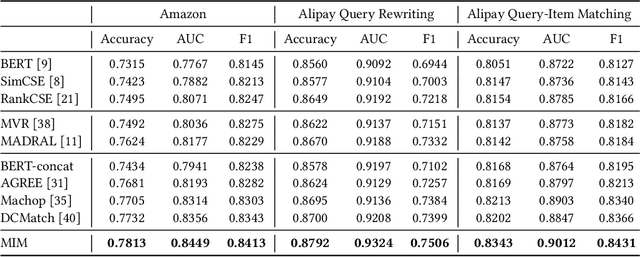Mingzhe Li
ManipLVM-R1: Reinforcement Learning for Reasoning in Embodied Manipulation with Large Vision-Language Models
May 22, 2025Abstract:Large Vision-Language Models (LVLMs) have recently advanced robotic manipulation by leveraging vision for scene perception and language for instruction following. However, existing methods rely heavily on costly human-annotated training datasets, which limits their generalization and causes them to struggle in out-of-domain (OOD) scenarios, reducing real-world adaptability. To address these challenges, we propose ManipLVM-R1, a novel reinforcement learning framework that replaces traditional supervision with Reinforcement Learning using Verifiable Rewards (RLVR). By directly optimizing for task-aligned outcomes, our method enhances generalization and physical reasoning while removing the dependence on costly annotations. Specifically, we design two rule-based reward functions targeting key robotic manipulation subtasks: an Affordance Perception Reward to enhance localization of interaction regions, and a Trajectory Match Reward to ensure the physical plausibility of action paths. These rewards provide immediate feedback and impose spatial-logical constraints, encouraging the model to go beyond shallow pattern matching and instead learn deeper, more systematic reasoning about physical interactions.
Audio Jailbreak: An Open Comprehensive Benchmark for Jailbreaking Large Audio-Language Models
May 21, 2025Abstract:The rise of Large Audio Language Models (LAMs) brings both potential and risks, as their audio outputs may contain harmful or unethical content. However, current research lacks a systematic, quantitative evaluation of LAM safety especially against jailbreak attacks, which are challenging due to the temporal and semantic nature of speech. To bridge this gap, we introduce AJailBench, the first benchmark specifically designed to evaluate jailbreak vulnerabilities in LAMs. We begin by constructing AJailBench-Base, a dataset of 1,495 adversarial audio prompts spanning 10 policy-violating categories, converted from textual jailbreak attacks using realistic text to speech synthesis. Using this dataset, we evaluate several state-of-the-art LAMs and reveal that none exhibit consistent robustness across attacks. To further strengthen jailbreak testing and simulate more realistic attack conditions, we propose a method to generate dynamic adversarial variants. Our Audio Perturbation Toolkit (APT) applies targeted distortions across time, frequency, and amplitude domains. To preserve the original jailbreak intent, we enforce a semantic consistency constraint and employ Bayesian optimization to efficiently search for perturbations that are both subtle and highly effective. This results in AJailBench-APT, an extended dataset of optimized adversarial audio samples. Our findings demonstrate that even small, semantically preserved perturbations can significantly reduce the safety performance of leading LAMs, underscoring the need for more robust and semantically aware defense mechanisms.
Pastiche Novel Generation Creating: Fan Fiction You Love in Your Favorite Author's Style
Feb 21, 2025Abstract:Great novels create immersive worlds with rich character arcs, well-structured plots, and nuanced writing styles. However, current novel generation methods often rely on brief, simplistic story outlines and generate details using plain, generic language. To bridge this gap, we introduce the task of Pastiche Novel Generation, which requires the generated novels to imitate the distinctive features of the original work, including understanding character profiles, predicting plausible plot developments, and writing concrete details using vivid, expressive language. To achieve this, we propose WriterAgent, a novel generation system designed to master the core aspects of literary pastiche. WriterAgent is trained through a curriculum learning paradigm, progressing from low-level stylistic mastery to high-level narrative coherence. Its key tasks include language style learning, character modeling, plot planning, and stylish writing, ensuring comprehensive narrative control. To support this, WriterAgent leverages the WriterLoRA framework, an extension of LoRA with hierarchical and cumulative task-specific modules, each specializing in a different narrative aspect. We evaluate WriterAgent on multilingual classics like Harry Potter and Dream of the Red Chamber, demonstrating its superiority over baselines in capturing the target author's settings, character dynamics, and writing style to produce coherent, faithful narratives.
EmbedGenius: Towards Automated Software Development for Generic Embedded IoT Systems
Dec 12, 2024



Abstract:Embedded IoT system development is crucial for enabling seamless connectivity and functionality across a wide range of applications. However, such a complex process requires cross-domain knowledge of hardware and software and hence often necessitates direct developer involvement, making it labor-intensive, time-consuming, and error-prone. To address this challenge, this paper introduces EmbedGenius, the first fully automated software development platform for general-purpose embedded IoT systems. The key idea is to leverage the reasoning ability of Large Language Models (LLMs) and embedded system expertise to automate the hardware-in-the-loop development process. The main methods include a component-aware library resolution method for addressing hardware dependencies, a library knowledge generation method that injects utility domain knowledge into LLMs, and an auto-programming method that ensures successful deployment. We evaluate EmbedGenius's performance across 71 modules and four mainstream embedded development platforms with over 350 IoT tasks. Experimental results show that EmbedGenius can generate codes with an accuracy of 95.7% and complete tasks with a success rate of 86.5%, surpassing human-in-the-loop baselines by 15.6%--37.7% and 25.5%--53.4%, respectively. We also show EmbedGenius's potential through case studies in environmental monitoring and remote control systems development.
Blockchain Data Analysis in the Era of Large-Language Models
Dec 09, 2024



Abstract:Blockchain data analysis is essential for deriving insights, tracking transactions, identifying patterns, and ensuring the integrity and security of decentralized networks. It plays a key role in various areas, such as fraud detection, regulatory compliance, smart contract auditing, and decentralized finance (DeFi) risk management. However, existing blockchain data analysis tools face challenges, including data scarcity, the lack of generalizability, and the lack of reasoning capability. We believe large language models (LLMs) can mitigate these challenges; however, we have not seen papers discussing LLM integration in blockchain data analysis in a comprehensive and systematic way. This paper systematically explores potential techniques and design patterns in LLM-integrated blockchain data analysis. We also outline prospective research opportunities and challenges, emphasizing the need for further exploration in this promising field. This paper aims to benefit a diverse audience spanning academia, industry, and policy-making, offering valuable insights into the integration of LLMs in blockchain data analysis.
Demonstration Selection for In-Context Learning via Reinforcement Learning
Dec 05, 2024Abstract:Diversity in demonstration selection is crucial for enhancing model generalization, as it enables a broader coverage of structures and concepts. However, constructing an appropriate set of demonstrations has remained a focal point of research. This paper presents the Relevance-Diversity Enhanced Selection (RDES), an innovative approach that leverages reinforcement learning to optimize the selection of diverse reference demonstrations for text classification tasks using Large Language Models (LLMs), especially in few-shot prompting scenarios. RDES employs a Q-learning framework to dynamically identify demonstrations that maximize both diversity and relevance to the classification objective by calculating a diversity score based on label distribution among selected demonstrations. This method ensures a balanced representation of reference data, leading to improved classification accuracy. Through extensive experiments on four benchmark datasets and involving 12 closed-source and open-source LLMs, we demonstrate that RDES significantly enhances classification accuracy compared to ten established baselines. Furthermore, we investigate the incorporation of Chain-of-Thought (CoT) reasoning in the reasoning process, which further enhances the model's predictive performance. The results underscore the potential of reinforcement learning to facilitate adaptive demonstration selection and deepen the understanding of classification challenges.
Write Summary Step-by-Step: A Pilot Study of Stepwise Summarization
Jun 08, 2024



Abstract:Nowadays, neural text generation has made tremendous progress in abstractive summarization tasks. However, most of the existing summarization models take in the whole document all at once, which sometimes cannot meet the needs in practice. Practically, social text streams such as news events and tweets keep growing from time to time, and can only be fed to the summarization system step by step. Hence, in this paper, we propose the task of Stepwise Summarization, which aims to generate a new appended summary each time a new document is proposed. The appended summary should not only summarize the newly added content but also be coherent with the previous summary, to form an up-to-date complete summary. To tackle this challenge, we design an adversarial learning model, named Stepwise Summary Generator (SSG). First, SSG selectively processes the new document under the guidance of the previous summary, obtaining polished document representation. Next, SSG generates the summary considering both the previous summary and the document. Finally, a convolutional-based discriminator is employed to determine whether the newly generated summary is coherent with the previous summary. For the experiment, we extend the traditional two-step update summarization setting to a multi-step stepwise setting, and re-propose a large-scale stepwise summarization dataset based on a public story generation dataset. Extensive experiments on this dataset show that SSG achieves state-of-the-art performance in terms of both automatic metrics and human evaluations. Ablation studies demonstrate the effectiveness of each module in our framework. We also discuss the benefits and limitations of recent large language models on this task.
Flexible and Adaptable Summarization via Expertise Separation
Jun 08, 2024



Abstract:A proficient summarization model should exhibit both flexibility -- the capacity to handle a range of in-domain summarization tasks, and adaptability -- the competence to acquire new knowledge and adjust to unseen out-of-domain tasks. Unlike large language models (LLMs) that achieve this through parameter scaling, we propose a more parameter-efficient approach in this study. Our motivation rests on the principle that the general summarization ability to capture salient information can be shared across different tasks, while the domain-specific summarization abilities need to be distinct and tailored. Concretely, we propose MoeSumm, a Mixture-of-Expert Summarization architecture, which utilizes a main expert for gaining the general summarization capability and deputy experts that selectively collaborate to meet specific summarization task requirements. We further propose a max-margin loss to stimulate the separation of these abilities. Our model's distinct separation of general and domain-specific summarization abilities grants it with notable flexibility and adaptability, all while maintaining parameter efficiency. MoeSumm achieves flexibility by managing summarization across multiple domains with a single model, utilizing a shared main expert and selected deputy experts. It exhibits adaptability by tailoring deputy experts to cater to out-of-domain few-shot and zero-shot scenarios. Experimental results on 11 datasets show the superiority of our model compared with recent baselines and LLMs. We also provide statistical and visual evidence of the distinct separation of the two abilities in MoeSumm (https://github.com/iriscxy/MoE_Summ).
Multi-Intent Attribute-Aware Text Matching in Searching
Feb 12, 2024



Abstract:Text matching systems have become a fundamental service in most searching platforms. For instance, they are responsible for matching user queries to relevant candidate items, or rewriting the user-input query to a pre-selected high-performing one for a better search experience. In practice, both the queries and items often contain multiple attributes, such as the category of the item and the location mentioned in the query, which represent condensed key information that is helpful for matching. However, most of the existing works downplay the effectiveness of attributes by integrating them into text representations as supplementary information. Hence, in this work, we focus on exploring the relationship between the attributes from two sides. Since attributes from two ends are often not aligned in terms of number and type, we propose to exploit the benefit of attributes by multiple-intent modeling. The intents extracted from attributes summarize the diverse needs of queries and provide rich content of items, which are more refined and abstract, and can be aligned for paired inputs. Concretely, we propose a multi-intent attribute-aware matching model (MIM), which consists of three main components: attribute-aware encoder, multi-intent modeling, and intent-aware matching. In the attribute-aware encoder, the text and attributes are weighted and processed through a scaled attention mechanism with regard to the attributes' importance. Afterward, the multi-intent modeling extracts intents from two ends and aligns them. Herein, we come up with a distribution loss to ensure the learned intents are diverse but concentrated, and a kullback-leibler divergence loss that aligns the learned intents. Finally, in the intent-aware matching, the intents are evaluated by a self-supervised masking task, and then incorporated to output the final matching result.
Improving the Robustness of Summarization Systems with Dual Augmentation
Jun 01, 2023Abstract:A robust summarization system should be able to capture the gist of the document, regardless of the specific word choices or noise in the input. In this work, we first explore the summarization models' robustness against perturbations including word-level synonym substitution and noise. To create semantic-consistent substitutes, we propose a SummAttacker, which is an efficient approach to generating adversarial samples based on language models. Experimental results show that state-of-the-art summarization models have a significant decrease in performance on adversarial and noisy test sets. Next, we analyze the vulnerability of the summarization systems and explore improving the robustness by data augmentation. Specifically, the first brittleness factor we found is the poor understanding of infrequent words in the input. Correspondingly, we feed the encoder with more diverse cases created by SummAttacker in the input space. The other factor is in the latent space, where the attacked inputs bring more variations to the hidden states. Hence, we construct adversarial decoder input and devise manifold softmixing operation in hidden space to introduce more diversity. Experimental results on Gigaword and CNN/DM datasets demonstrate that our approach achieves significant improvements over strong baselines and exhibits higher robustness on noisy, attacked, and clean datasets.
 Add to Chrome
Add to Chrome Add to Firefox
Add to Firefox Add to Edge
Add to Edge